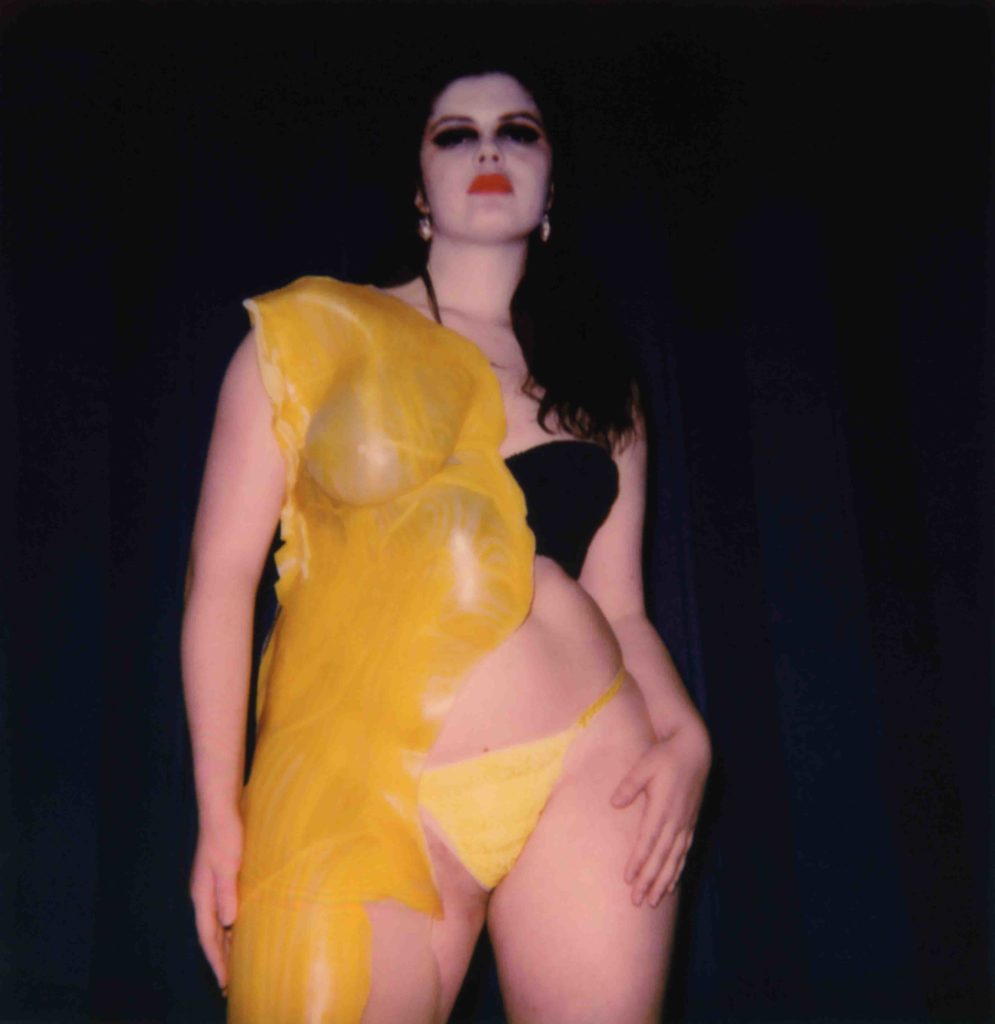Sinead O’Dwyer. Manipulating Fashion Design
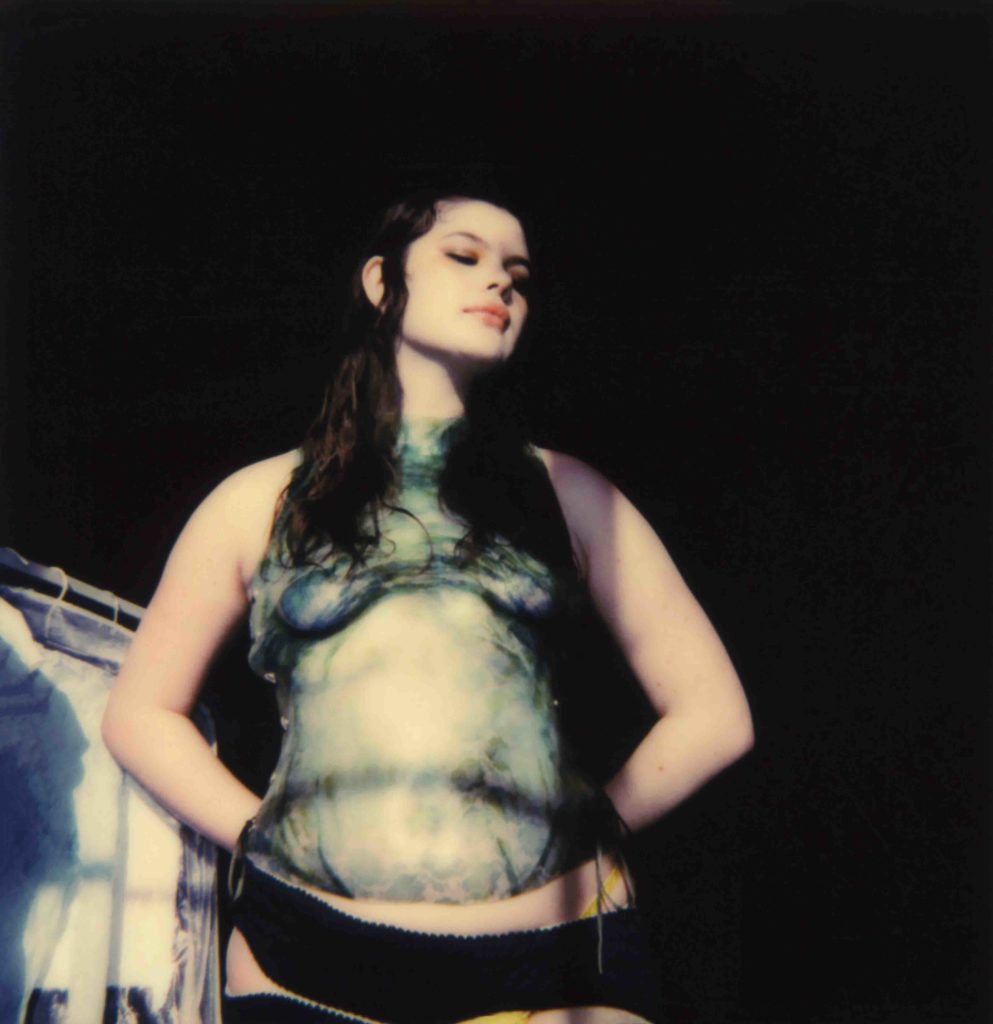 Sinéad O’Dwyer has been under the radar and keeps on surprising for her avant-garde approach to fashion design. Her work investigates the relationship existing between the body and the garment from a sociological and philosophical point of view. She examines the dichotomy of perception versus reality, calling out fashion and society as the propagators of such fracture. Oscillating between art and fashion design, O’Dwyer uses sculpture and silicon as media to question the misconception we have of the garment itself and its relation to the body. By manipulating the material on the body of a life-casted model and specifically for it, O’Dwyer gives a new and healthier meaning to the garment and destroys our mental cages by operating within the same system that created them.
Sinéad O’Dwyer has been under the radar and keeps on surprising for her avant-garde approach to fashion design. Her work investigates the relationship existing between the body and the garment from a sociological and philosophical point of view. She examines the dichotomy of perception versus reality, calling out fashion and society as the propagators of such fracture. Oscillating between art and fashion design, O’Dwyer uses sculpture and silicon as media to question the misconception we have of the garment itself and its relation to the body. By manipulating the material on the body of a life-casted model and specifically for it, O’Dwyer gives a new and healthier meaning to the garment and destroys our mental cages by operating within the same system that created them.
I meet Sinéad O’Dwyer at her studio in Wood Green, North London, on a very rainy evening. I find her working on a wedding dress. “You know – she says – it is funny to do and it’s rewarding.” She shows me the work in progress: exactly what you would expect a wedding dress by Sinéad O’Dwyer to look like: unconventional, intimate, romantic and pervaded with sensuality. “Is this the kind of dress you would wear at your wedding?” I ask. “Actually, at my wedding I wore a bikini embroidered with crystals.” She shows me a picture of her and her wife (and partner in crime) sparkling under the sun. Again: unconventional, intimate, romantic and pervaded with sensuality. “We got married on Fire Island, New York, a couple of years ago. We’ll do it again, surrounded by family and friends this time, maybe somewhere in Italy, on the coast. This time I will wear a dress like this.”
Valeria Della Valle: Well, let’s start with the big news. You have recently inaugurated the ‘Waves and Archives’ gallery in New York with a solo show.
Sinead O’Dwyer: Oh yes! It’s very exciting. When Manan Ter-Grigoryan, the founder of the galley, contacted me she talked about launching her own gallery with a solo show of my work. The project is extremely interesting: it consists in exploring fashion as art and representing fashion designers as artists in a gallery context. The show opened in March to coincide with Armory Show in New York.
VDV: No surprise she wanted you to inaugurate it. It is difficult for me to look at your work just in terms of fashion designs, it’s more of an artistic practice. When it comes to your creations, it makes sense to experience the designs as artworks.
SOD: Yes. It’s exciting to get to show my work because I realized that most of the people have never seen it in real life. And the gallery space feels like the right context for it. I do want to be in both worlds moving forward so this is a great opportunity. Operating into the fine art world would give me the chance to evolve into the fashion sphere without having to do commercial work. At the same time, I am not the typical fashion designer, my work oscillates between the two fields.
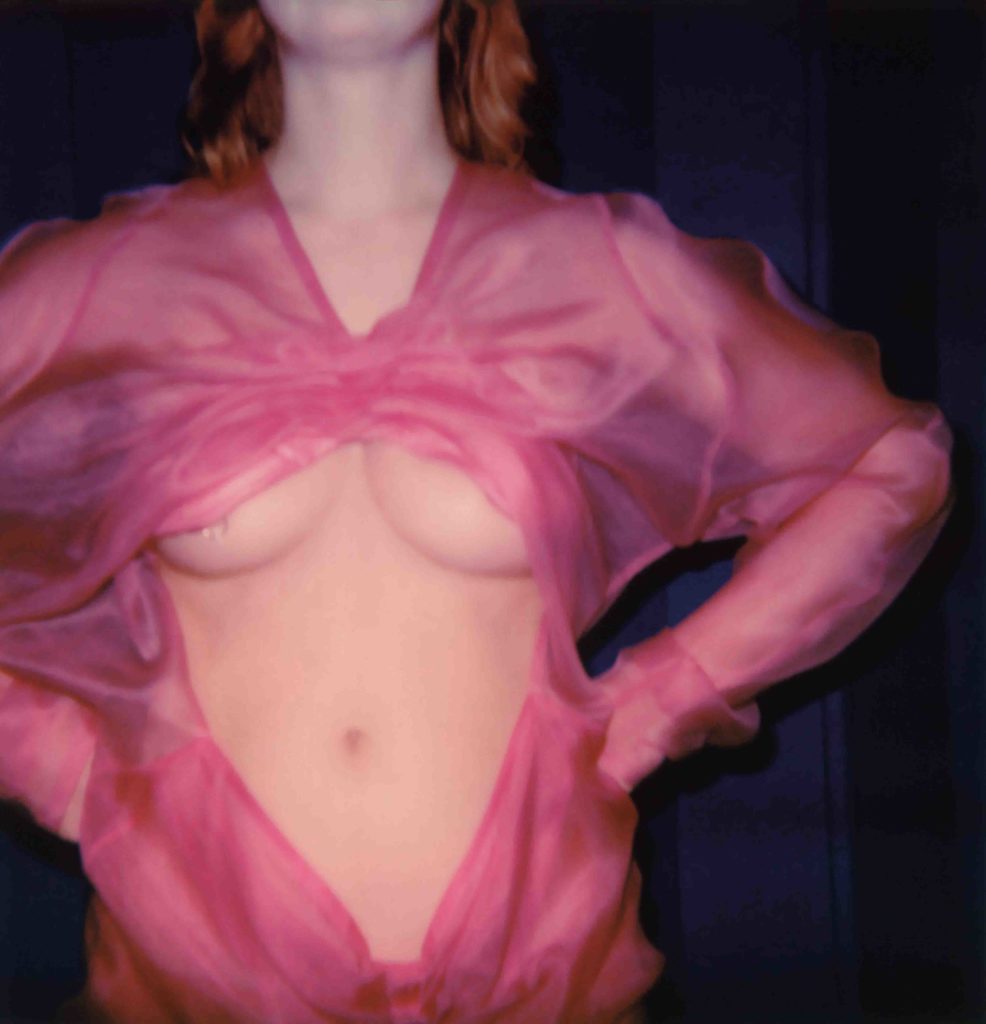 VDV: I like the name you gave to the show (In Myself), which I think represents both the personal side of your work and the collective purpose. I see this duality in what you do. It involves all women and generations, has a strong social value. On the other hand, it all begins with a very autobiographical and personal experience of self-consciousness. Do you consider it a form of therapy?
VDV: I like the name you gave to the show (In Myself), which I think represents both the personal side of your work and the collective purpose. I see this duality in what you do. It involves all women and generations, has a strong social value. On the other hand, it all begins with a very autobiographical and personal experience of self-consciousness. Do you consider it a form of therapy?
SOD: Definitely. I realized that the way I perceived myself was strongly influenced by external forces which would impact my mental health and the perception I had of myself. I think this was a way to try to gain some control over it. Honestly, I had no idea I was going to make work like this or even about this topic, but then I started to think about not only about what I liked but also what felt really personal to me. I thought about how strongly my body dysmorphia affected my day-to-day life and my mental health; and how distorted is the perception we have of our body and why. I realized how exclusionary fashion is in school: they decide that you will make all your clothes for one person, they give you a fitting model. They select for you what they consider to be “a standard size”. And this is how you learn the job, with this standardized mentality. I kept thinking about my mom. She would say things about her body, complaining about her legs being bad legs because she would not find trousers that fit her in a nice way. I realised that the trousers didn’t fit nicely not because she had bad legs but because the trousers were simply not made for my mom’s legs. She was not the “size model”. So I started to explore the idea of creating bodies that were layered.
VDV: The women wearing your designs unveil something about their bodies rather than cover them up. Michelangelo once said: I saw the angel in the marble and carved until I set him free. Do you relate to this?
SOD: To me, the story is crucial. I usually choose friends who tell me about their personal stories of self-consciousness and self-acceptance, about their relationship with their bodies and how society would affect these relations. I life cast models for whom this can also be a therapeutic experience. In this sense, my work is very literal. We are put under the pressure of having to fit into something that is made considering someone else’s body and shape. And if we don’t, there is something wrong with us. It’s absurd.
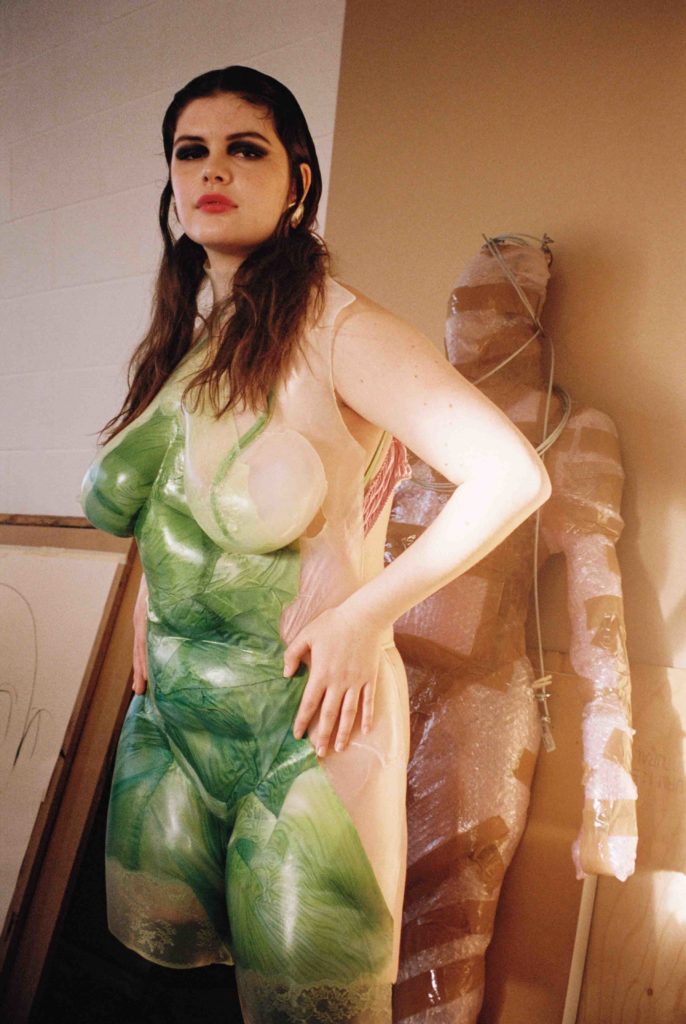 VDV: You are fighting the system from the inside. Do you have faith in fashion as a medium to educate and correct certain mindsets?
VDV: You are fighting the system from the inside. Do you have faith in fashion as a medium to educate and correct certain mindsets?
SOD: Yes. I think that there are quite a few young designers now who are choosing to represent more than one sort of body and I think that it has already made a huge impact in London, for instance. It’s a start but production has to follow through. Representation is important, especially for children, but then you should be able to actually find something that fits you and feels like you have been considered. But it’s all about money in the end.
VDV: Indeed. Back in the days, our grandmothers would go to the tailors and get something that was made for them, made for a unique body. But then, again, it’s all about money. How do you approach sustainability?
SOD: I’m very careful with the materials I use for the garments that will be sold. Obviously, my sculptural works are not sustainable but I would never produce silicon garments, that would be ridiculous, and I have never used silicon as embellishment on any of my designs. I think we should also consider sustainability from a different perspective: if something fits you well, you’ll keep it. In these terms, my work is essentially sustainable. There is no point in having sustainable brands that only make up to size 12. What you said about tailoring is very sustainable: even if the garment is not made with a sustainable fabric, if it’s well tailored to you, then you’ll wear it for years. Fit is really important to sustainability, it has to be part of the conversation.
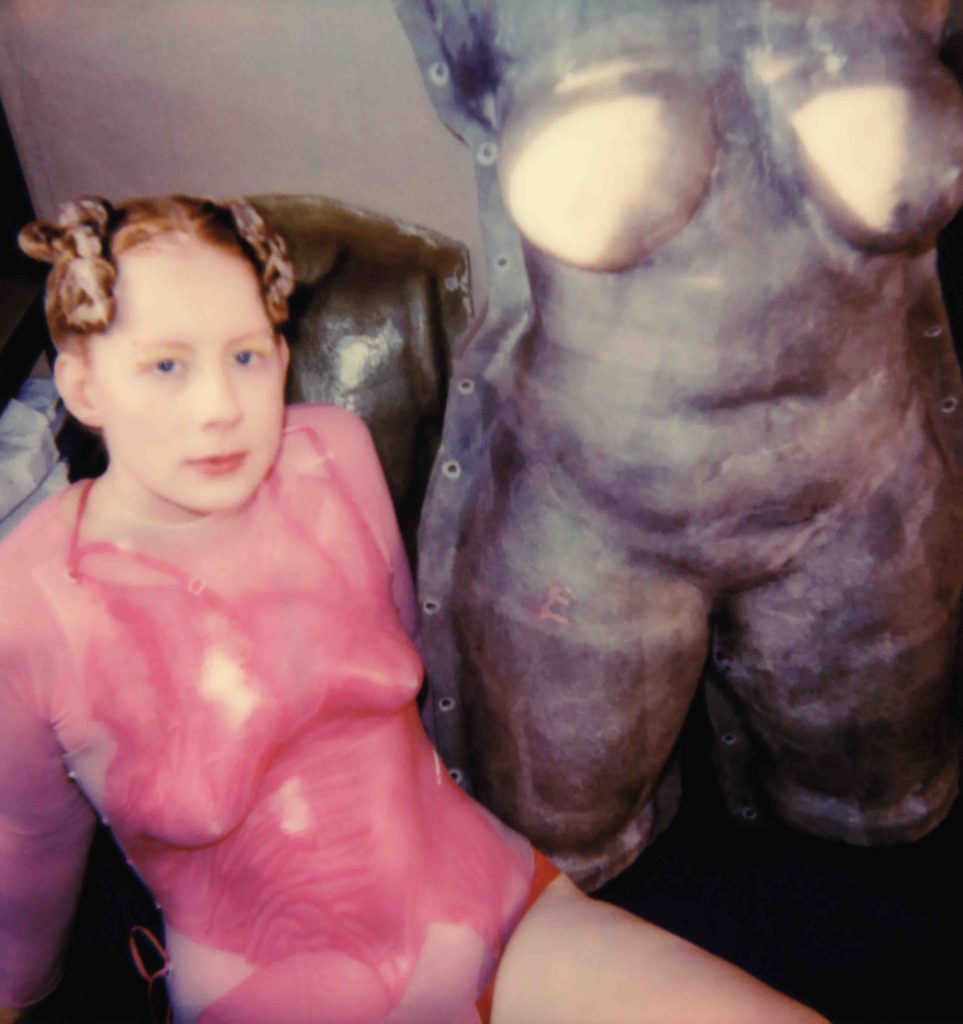 VDV: Definitely. Is there a specific relationship between the designs you have in mind and the fabrics you use to realize them?
VDV: Definitely. Is there a specific relationship between the designs you have in mind and the fabrics you use to realize them?
SOD: I think a lot of my referencing has been linked to lingerie, especially at the beginning. I felt like this was a very intimate topic to explore, something very personal. I was referencing to lingerie because of its intimate side but also in the sense that underwear has a history of shaping the female body.
VDV: You spent a few months at ‘The Savage Ranch’ working with Love Bailey. How did this experience affect your artistic practice?
SOD: Oh yes, that was amazing. I wrote her out of the blue, I knew she had a residency. So I ended up in the middle of the desert, without even knowing her. Compared to London, where you are basically always inside, experiencing that kind of freedom and landscape was really inspiring, freeing and emotional. I would spend the day sewing on the porch, facing the desert, and sleeping on the rooftop. Love Bailey is amazing as a thinker and as an artist. The whole situation was really intimate (it was just us and her mother). I came back with a very different perspective.
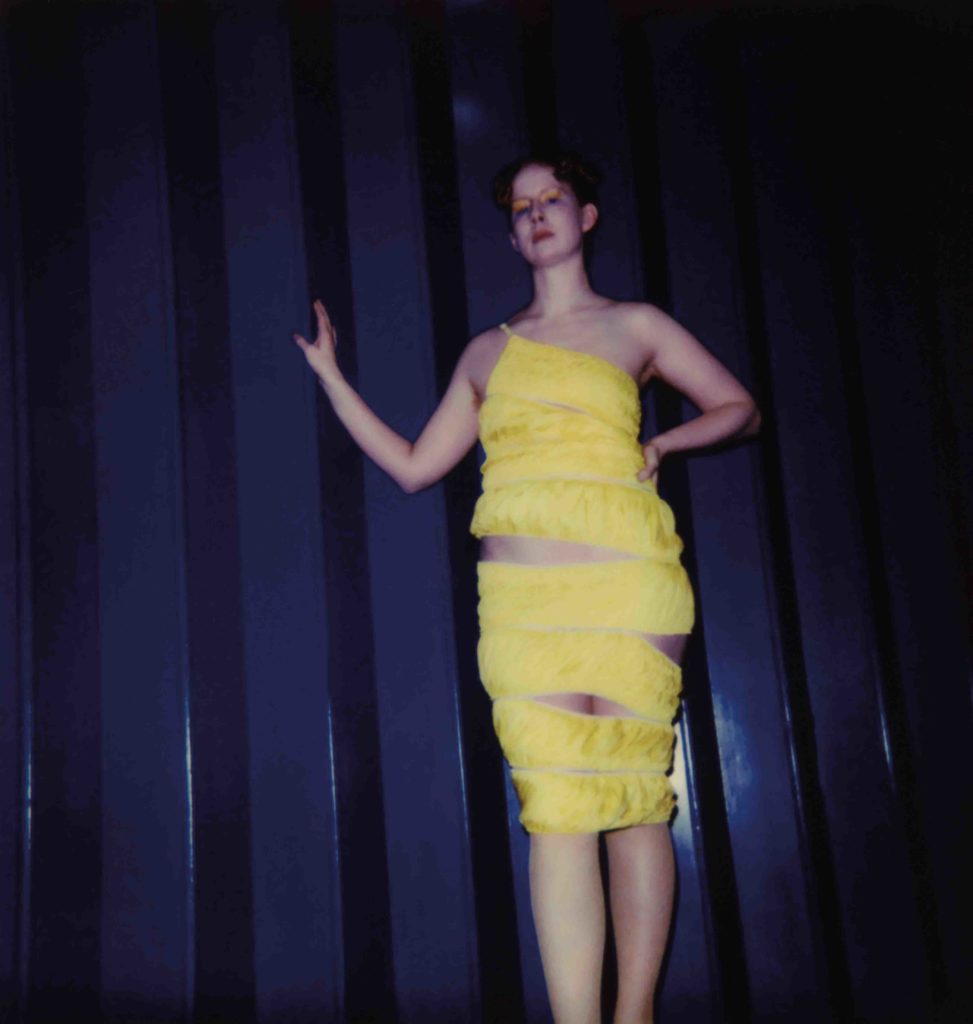 VDV: It seems to me that the pedagogical aspect is really important to you.
VDV: It seems to me that the pedagogical aspect is really important to you.
SOD: Definitely. I’m actually quite interested in having the opportunity to do something within education. There are so many things I have come to realize through my work, I think it could be useful to share this awareness. There should be more communication over how things are made, also in terms of sustainability and ethical making. Less people would keep buying certain items if they knew in which conditions these were made. It is weird to think that we have no clue where the products we use and wear come from, and yet they are part of our life. I think this is something that should be taught in schools.
VDV: I feel your approach is very multidisciplinary. Have you even thought about exploring other artistic mediums?
SOD: I used to perform. There could be room for more physical and performative work. Sometimes I feel like: “where’s my body?,” I miss that physicality.
When I was younger I wanted to be either a dancer or a designer. I think it makes sense, in both cases it’s about the body and expressing emotions.
